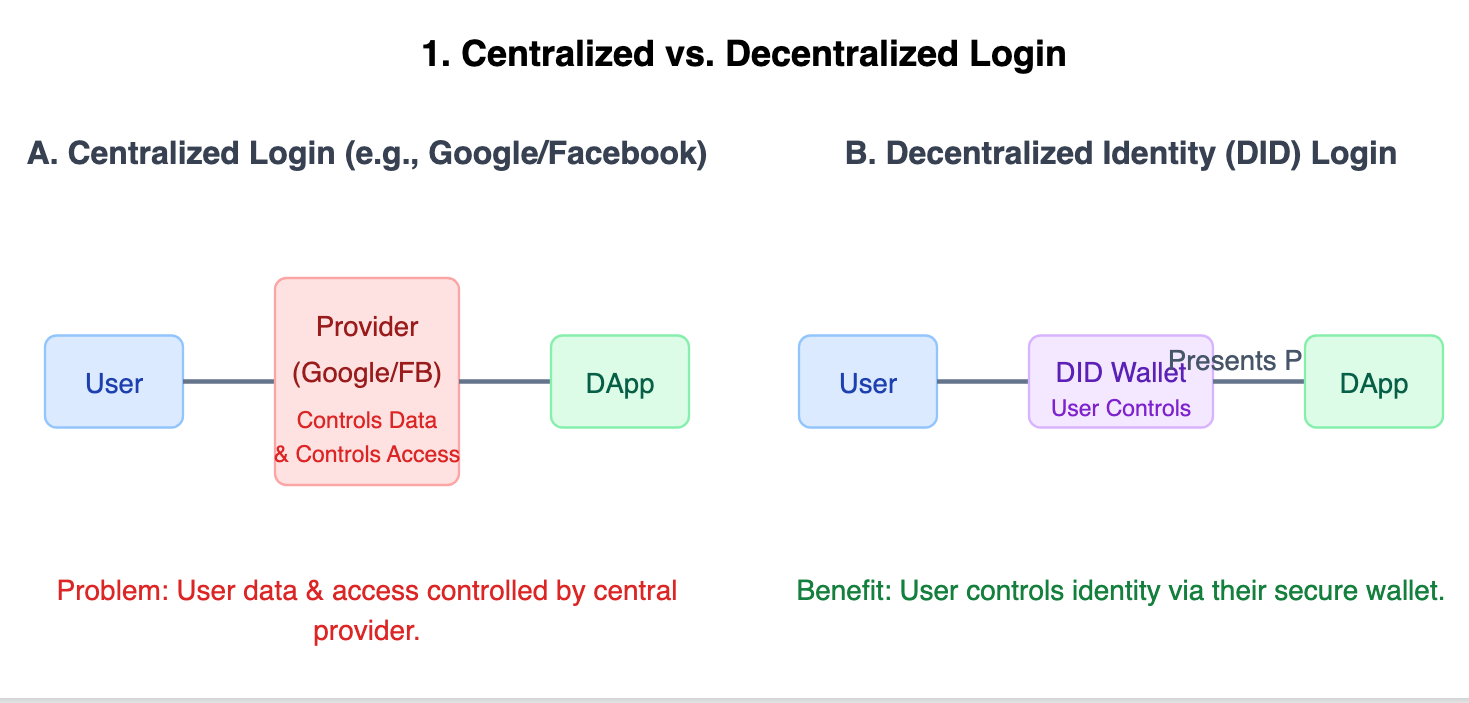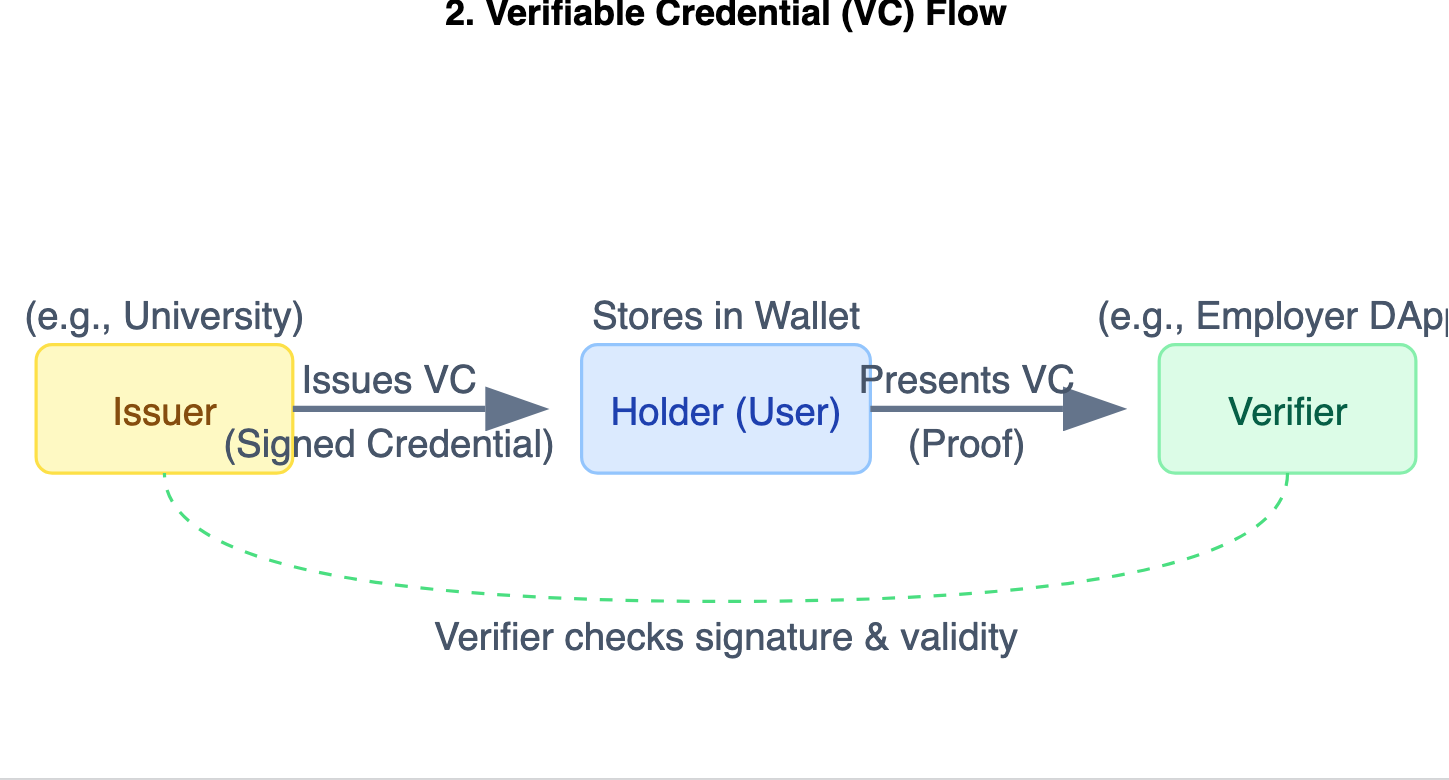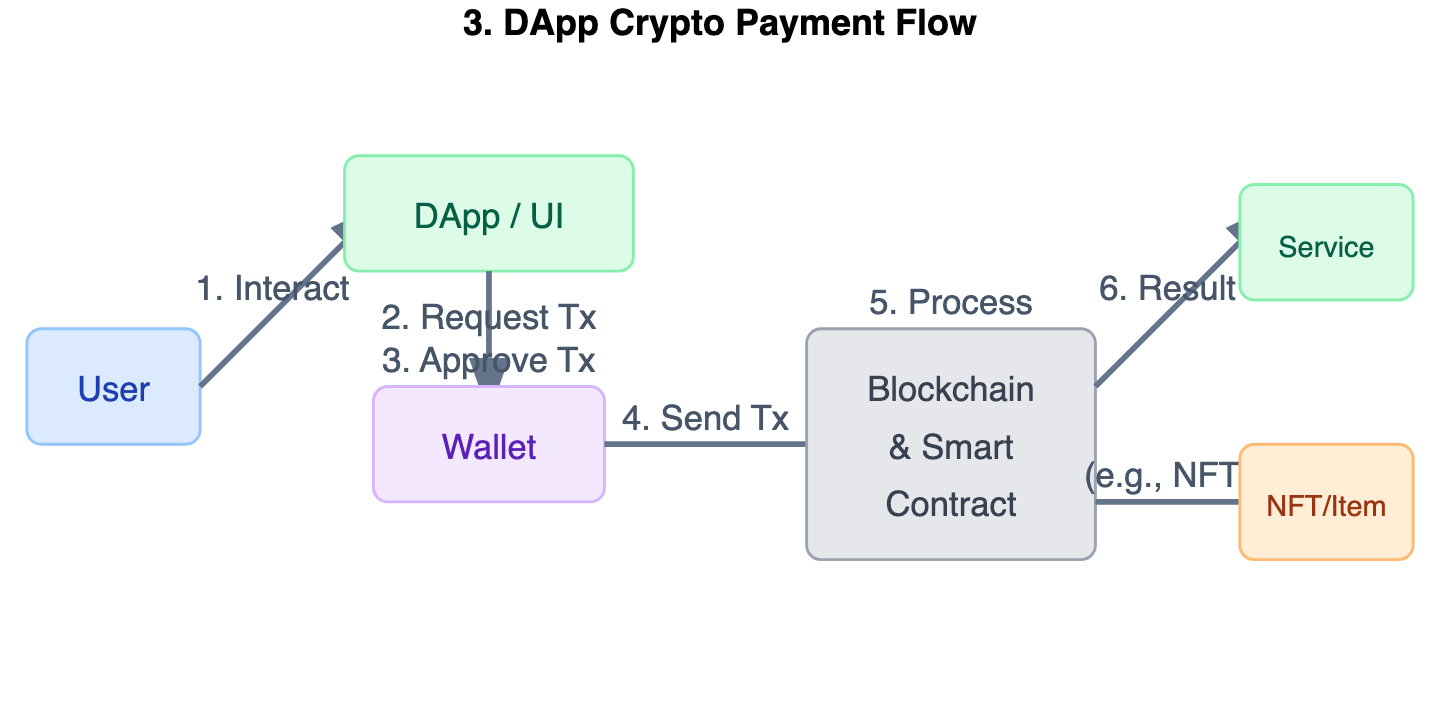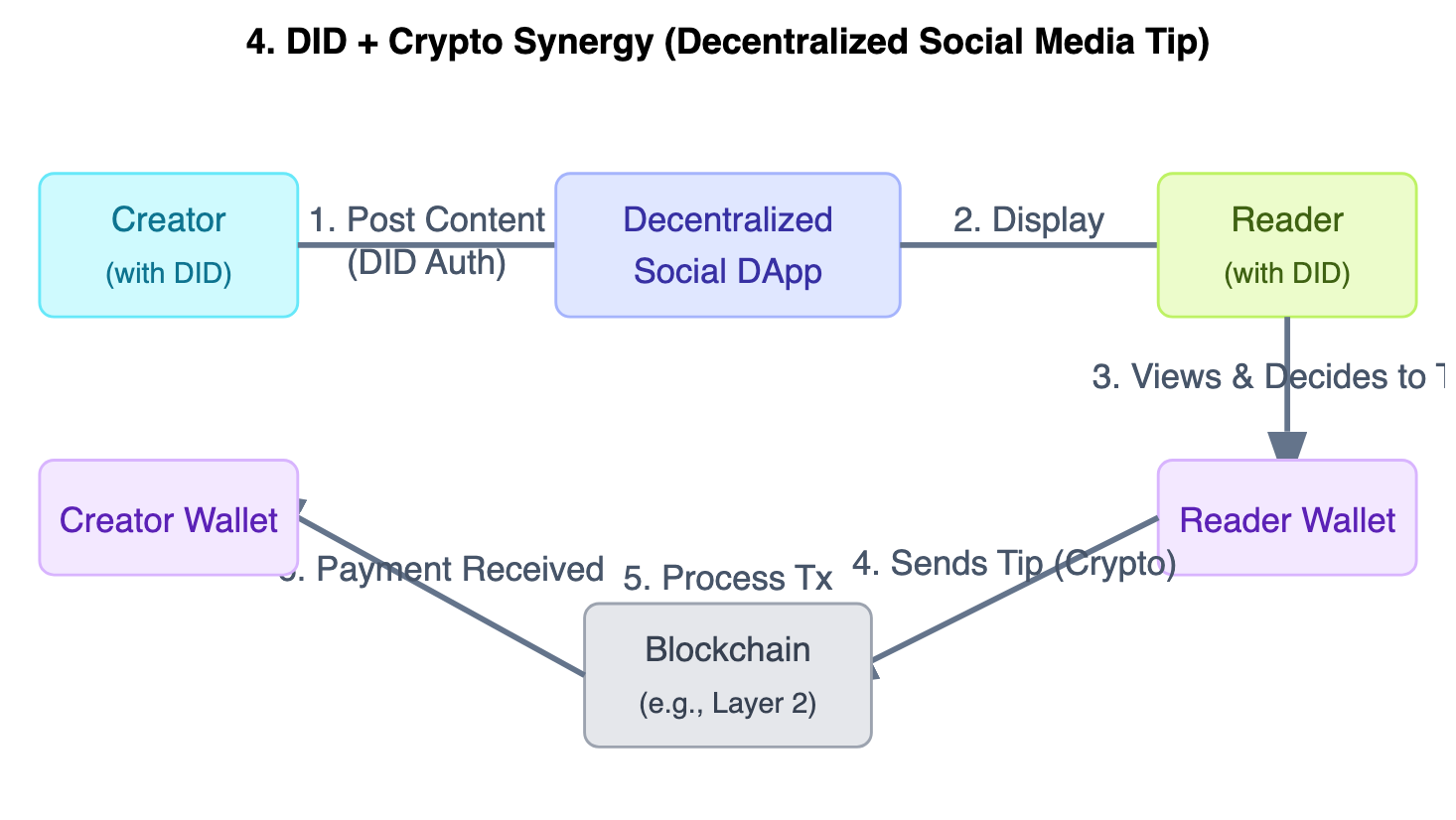We're moving away from centralized platforms towards a more decentralized web – a space where users regain control over their data and applications can interact autonomously, sometimes powered by Artificial Intelligence (AI). ArcBlock's CEO Robert Mao in a recent podcast two critical technologies underpin this evolution, especially for the emerging "agent economy": Decentralized Identity (DID) and Cryptocurrency Payments.
Whether you're a builder architecting the technical backbone or a non-technical founder guiding the product vision, understanding and integrating these components is no longer optional; it's essential for creating relevant, robust, and future-proof decentralized applications (DApps). This article takes a quick look into why DID and crypto payments will be crucial in the future and provides practical insights for builders of all backgrounds.
Section 1: Decentralized Identity (DID) - Giving Users Back Control
- What It Is (Conceptually): At its core, DID is like giving users a universal, self-owned digital passport. Instead of relying on accounts created and controlled by companies (like Google, Facebook, or Apple), users manage their identity information using secure, blockchain-based technology. They can then prove things about themselves directly to DApps without needing a central middleman.

- Why It Matters (The Value Prop):
- True User Control & Privacy: Users hold the keys to their identity. They decide precisely what data points (like age verification, credentials, etc.) to share, when, and with whom, minimizing unnecessary data exposure.
- Enhanced Security: Cryptographic methods secure the identity, reducing the risk associated with large, centralized databases vulnerable to breaches.
- Permissionless & Censorship-Resistant: Anyone can create and use a DID. Interactions aren't easily blocked or censored by a single authority, fostering open ecosystems.
- Interoperability & Reusability: A single DID can potentially serve as the user's identifier across numerous DApps, streamlining their digital experience. Credentials earned in one context (like a course completion certificate) can be presented elsewhere.
- Verifiable Credentials (VCs): Extending DID: DIDs often work hand-in-hand with Verifiable Credentials. Think of these as digitally signed, tamper-proof claims about a DID holder (e.g., "This person completed this course," "This person is over 18"). Today, both DID, and Verifiable Credentials (VCs) are integrated into the ArcBlock ecosystem.

For Non-Technical Builders (The "So What?"): This enables smoother, more secure logins ("Sign in with your Wallet"). It builds user trust because you aren't unnecessarily collecting and storing sensitive data. You can verify user attributes (like community membership and qualifications) required for your DApp without cumbersome processes or privacy risks. We saw a recent example of this at a large identity organization where non-approved members accessed meetings and tools that should have been restricted. With DIDs and VCs, each user can receive permission to access specific tools and restrict them to others.
- For Developers (The Tech Angle):
- Standards: Get familiar with W3C DID Core specifications and the Verifiable Credentials Data Model.
- DID Methods: Understand how DIDs are anchored and resolved (e.g.,
did:ethr,did:key,did:abt(ArcBlock),did:pkh). Each has implications for security, cost, and decentralization. - Key Management: This is critical for users. How will they securely store the cryptographic keys associated with their DID? Solutions range from browser extensions (DID Wallet) to mobile apps to more advanced social recovery schemes.
- Libraries/SDKs: Leverage tools like DIDConnect (ArcBlock) or platform-specific implementations like ArcBlock's DID Connect to simplify development.
Section 2: Crypto Payments - Fueling the Decentralized Economy
- What It Is (In Context): This refers to using blockchain-based digital assets (like ABT, ETH, or stablecoins like USDC, or DApp-specific tokens) to transfer value directly within your application's ecosystem. These transactions occur peer-to-peer or between users, bypassing traditional banking rails.
- Why It Matters (The Value Prop):

- Automation & Programmability: Crypto payments shine when combined with smart contracts. You can automate payouts, subscriptions, escrow services, royalty distributions, or even enable AI agents to transact based on predefined logic, without manual intervention.
- Speed & Global Reach: Transactions can often settle in seconds or minutes, 24/7, anywhere in the world, dramatically faster than traditional cross-border payments.
- Cost Efficiency (Context Dependent): With ArcBlock, if you stake 1 ABT token, there are no gas fees, where as Eth (like Ethereum Layer 1) can be high.
- Financial Inclusion: Provides access to digital payments for individuals underserved by traditional banking systems.
- Transparency: Transactions with ArcBlock are recorded on its public ledger ABT Network offering audibility.
- For Non-Technical Builders (The "So What?"): Enable frictionless micro-transactions, build robust in-app economies, facilitate instant global payments to contributors or users, and create automated systems where AI agents pay each other for services.
- For Builders (The Tech Angle):
- Blockchain Choice: ArcBlock offers both a Layer 1 and Layer 2 blockchain giving your flexibility and interoperability to help you meet your DApp's needs for speed, cost, and security.
- Wallet Integration: Crucial for UX. ArcBlock's DID Wallet enables smooth onboarding and access to ArcBlock's entire ecosystem automatically.
- Payment Gateways: ArcBlock's Payment Kit enables payments using ABT, Base, Eth or even USD.
Section 3: Synergy - Where DID and Crypto Payments Meet
Putting DID and payment together with AI, you are enabling sophisticated and trust-minimized interactions:

- Other Examples:
- DeFi: DID for privacy-preserving KYC/AML checks + Crypto payments.
- DAOs: DID for verified membership/voting + Crypto for management/payouts.
- Gaming/Metaverse: DID for unique avatar/asset ownership (NFTs) + Crypto for marketplace transactions.
- Verified Credentials Marketplace: Users pay crypto to issuers (verified by DID) for specific attestations (e.g., professional certifications).
- Agent Economy: Autonomous AI agents, identified by DIDs, contract and pay each other using crypto for data, computation, or services rendered.
Section 4: Getting Started - Considerations for Builders
- For Non-Technical Builders:
- Start with "Why?": How will DID or crypto uniquely solve a user problem or create significant value for your DApp? Avoid implementing tech for tech's sake.
- Prioritize User Experience (UX): How easy is it for your target user to set up a DID wallet? To acquire and use crypto? Abstracting complexity is vital. Early DApps often suffered from poor UX – learn from that.
- Phase Your Rollout: Consider starting with one component (e.g., DID for login) before integrating complex, intertwined systems.
- Stay Informed on Regulations: The legal landscape for crypto and digital identity is evolving globally. Be aware of potential compliance needs.
- For Developers:
- Choose Your Stack Thoughtfully: Research the trade-offs of different blockchains (L1/L2), DID methods, wallet solutions, and smart contract platforms. Consider security, scalability, cost, and developer community support.
- Security is Non-Negotiable: Implement rigorous security practices for key management (DID) and smart contracts (payments). Audits are essential for contracts handling value.
- Leverage Standards & Tools: Utilize established W3C standards, open-source libraries, and SDKs to accelerate development and ensure broader compatibility.
- Build, Test, Iterate: Use testnets extensively. Gather user feedback early and often, especially around the complexities of wallet interaction and key management.
Conclusion
Decentralized Identity and Cryptocurrency Payments are not fleeting trends; they are foundational elements of the next-generation internet. They empower DApps to be more secure, efficient, transparent, and user-centric. Crucially, they unlock new possibilities for automation and complex interactions, paving the way for innovations like the AI-driven agent economy.
Builders who understand the "why" and master the "how" of integrating DID and crypto payments will be creating the applications that define this exciting decentralized future. The time to start learning and building is now.
